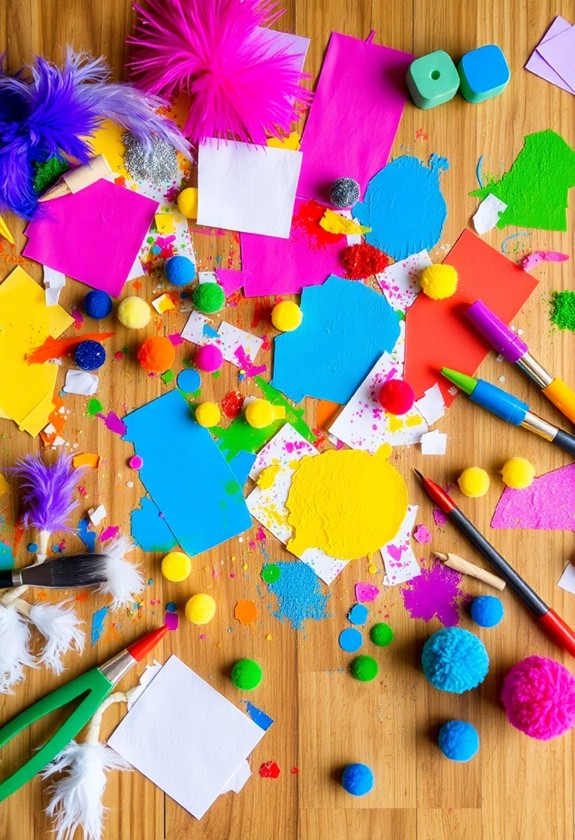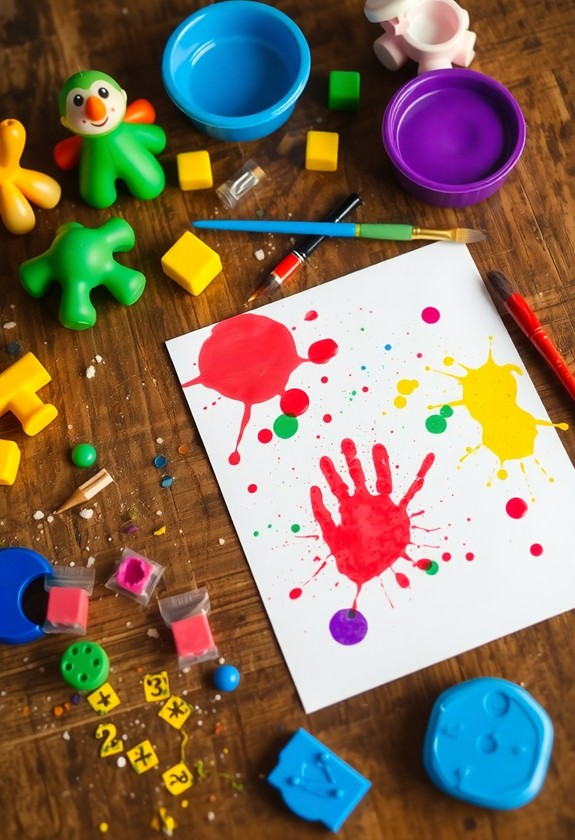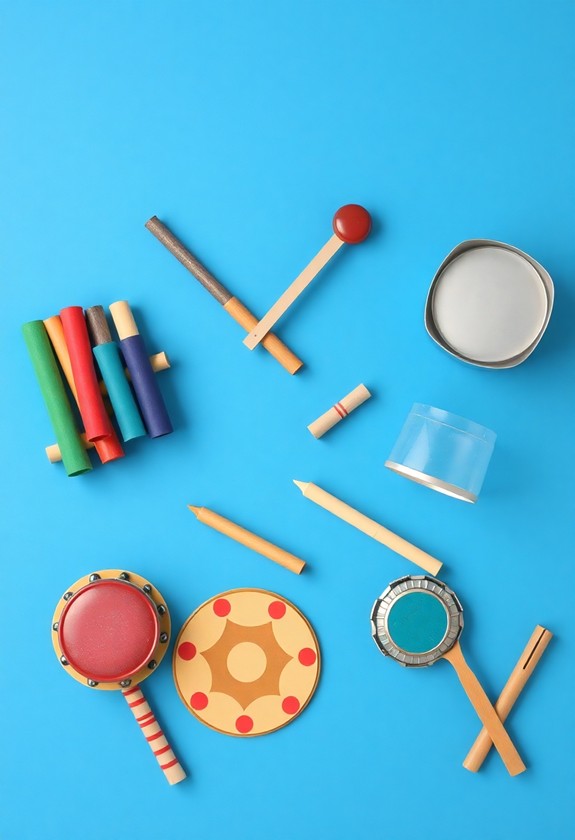Release your toddler's creativity with these awesome sensory art activities! Let them squish and smear with edible finger paints, or create textured masterpieces using fuzzy, scratchy, and smooth materials. Knead scented play dough for a nose-tickling experience, or try mess-free painting in squishy bags. Get sandy with colorful sand art, or cool down with melting ice cube watercolors. Go on a nature hunt for texture rubbings, or immerse yourself in a sensory bin filled with artsy treasures. For a glowing good time, paint in the dark with special luminous paints. And don't forget bubble wrap printing – it's poppin' with fun! These activities are just the tip of the creative iceberg!
Creative Highlights
- Finger painting with edible colors promotes cognitive development and safe sensory exploration through taste and touch.
- Squishy bag painting offers mess-free creativity while supporting cognitive development and pattern experimentation.
- Ice cube watercolor painting combines temperature sensations with artistic expression, ideal for hot days.
- Textured collage making enhances fine motor skills and sensory investigation using various materials like cotton and sandpaper.
- Scented play dough creations aid memory retention and cognitive processing through multi-sensory experiences.
Finger Painting With Edible Colors
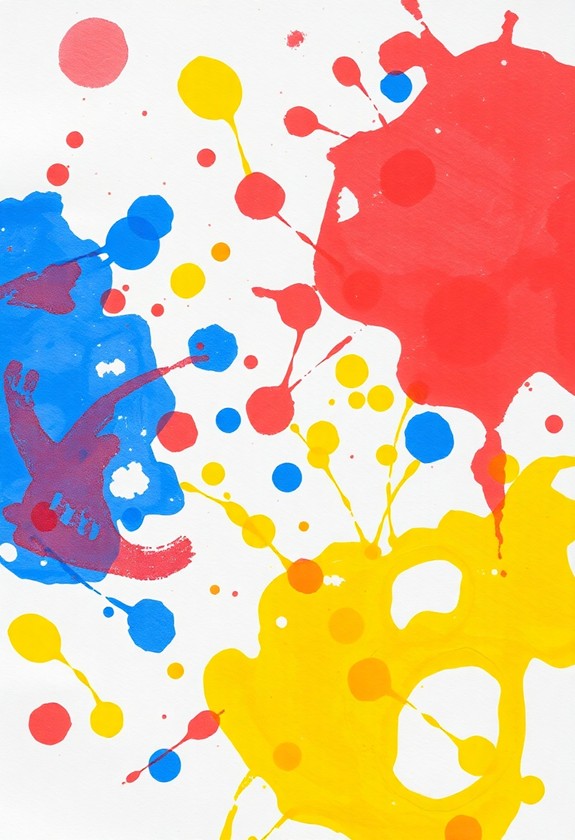
Why settle for ordinary finger paints when you can create edible masterpieces? Your toddler will love this tasty twist on a classic art activity! Get ready for a finger-licking good time with these yummy, colorful creations. This cognitive development activity likewise promotes fine motor skills and hand-eye coordination, making it a perfect choice for curious toddlers.
What you'll need:
- Plain yogurt
- Food coloring
- Large paper or a tray
- Smocks or old clothes
Let's get messy:
- Mix yogurt with different food colors in separate bowls.
- Spread paper on a table or use a tray for easy cleanup.
- Dress your little artist in a smock or old clothes.
- Let the fun begin!
Watch as your toddler swirls, smears, and splatters the edible paints. They'll be amazed at how colors blend and change! But wait, there's more – encourage them to taste their artwork. It's a sen-sational experience for their taste buds too!
This activity isn't just fun, it's educational. Your child will learn about colors, textures, and cause-and-effect. Plus, it's a great way to develop fine motor skills. So, get ready to create a masterpiece that's good enough to eat!
Textured Collage Making
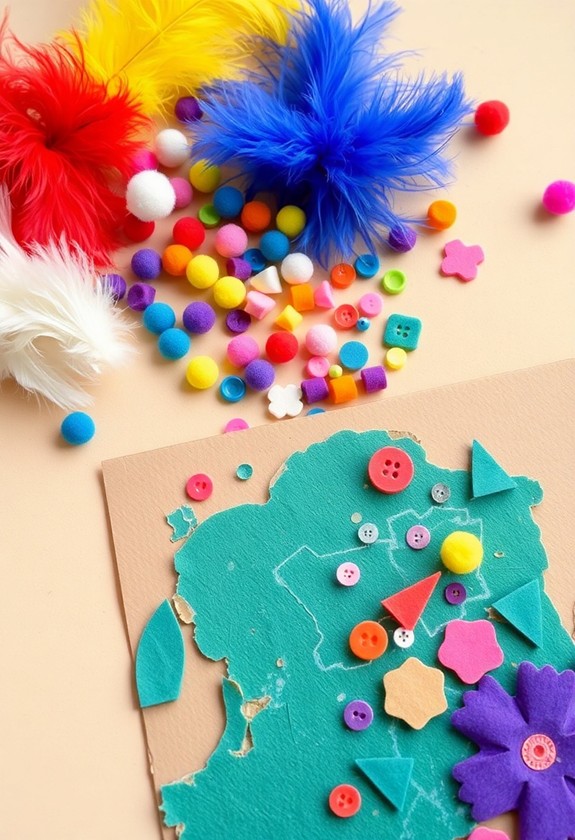
Your toddler's senses will come alive with this exciting textured collage activity. It's time to release their inner artist and investigate the world of touch! Gather materials with various textures: soft cotton balls, rough sandpaper, smooth feathers, and crinkly tissue paper. Don't forget some sturdy cardboard for the base! This activity is perfect for enhancing fine motor skills and promoting cognitive development through sensory investigation.
Start by helping your little one apply a thin layer of child-safe glue to the cardboard. Now, let the fun begin! Encourage them to pick up different materials and press them onto the glue. Watch as they uncover the contrasts between scratchy and silky, bumpy and flat. It's a tactile adventure!
As they create, chat about the textures. "Ooh, that's fuzzy!" or "Wow, so smooth!" This builds vocabulary and sensory awareness. And here's a pro tip: add some scented items like cinnamon sticks or lavender for an olfactory twist!
When they're done, you'll have a masterpiece that's a feast for the fingers and eyes. Hang it up and let your tot proudly show off their textured treasure. It's not just art, it's a sensory sensation!
Scented Play Dough Creations
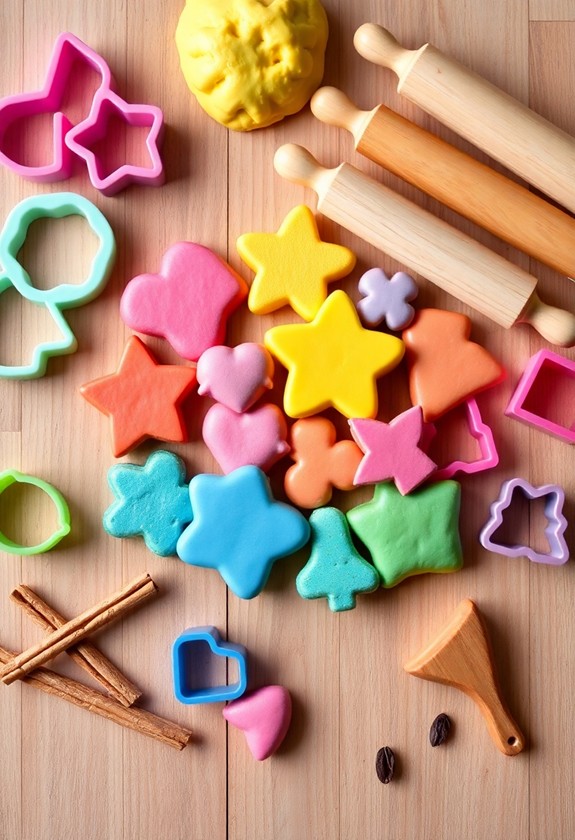
From textures to scents, let's explore another sensory adventure with your toddler. Get ready to knead, squish, and sniff your way through Scented Play Dough Creations!
First, whip up a batch of homemade play dough. It's easy! Mix flour, salt, water, and oil in a bowl. Now, here's where the fun begins! Add a few drops of fragrance oil or extracts to give your dough a delightful aroma. Try lavender for calm, peppermint for energy, or vanilla for a sweet treat! This multi-sensory experience aids in memory retention and information processing, vital for early childhood development. Plus, regular crafting stimulates brain regions associated with problem-solving, creativity, and motor skills.
Once your scented dough is ready, let your little one's imagination run wild! They can roll, pat, and mold to their heart's content. Encourage them to create "scent-sational" masterpieces like fragrant flowers or aromatic fruits. As they play, ask them to describe the smells. Is it sweet? Spicy? Relaxing?
But wait, there's more! Why not turn this into a guessing game? Make different scented batches and have your toddler sniff out which is which. It's nose-talgic fun that'll have them begging for more! Remember, supervision is key, and always keep the dough away from curious mouths.
Squishy Bag Painting
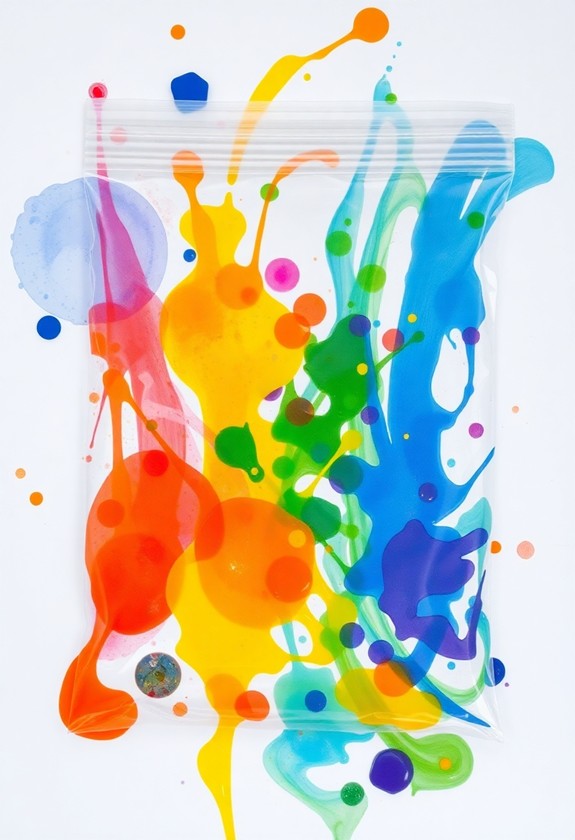
Squishing, smearing, and swirling colors without the mess? Yes, please! Squishy bag painting is a toddler's dream come true. It's a sensory explosion that'll keep little hands busy and little minds engaged. This activity not only enhances creativity but likewise supports cognitive development through problem-solving as toddlers investigate designs and patterns.
What you'll need:
- Ziplock bags
- Washable paint
- Tape
- White paper (optional)
Let's get squishing!
- Squirt different colors of paint into the bag.
- Squeeze out the air and seal it tight.
- Secure the bag to a table or tape it to a window.
Now, watch your little artist go wild! They can use their fingers, palms, or even elbows to push the paint around. The colors will mix and mingle, creating new shades and patterns. It's like magic in a bag!
Want to take it up a notch? Place white paper behind the bag to capture their masterpiece. Or, try adding glitter or small objects for extra sensory fun. The possibilities are endless!
This activity isn't just fun – it's likewise great for developing fine motor skills and color recognition. Plus, it's a breeze to clean up. Talk about a win-win!
Sand Art and Drawing
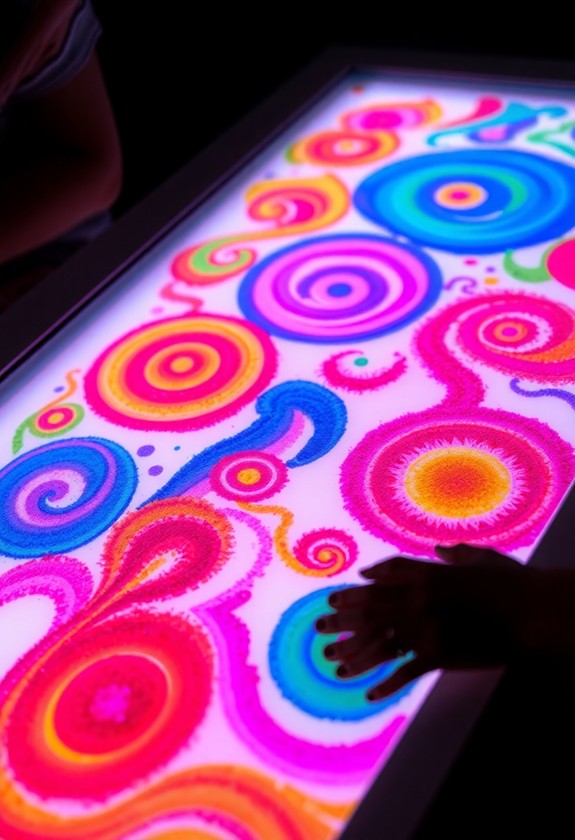
After investigating the world of squishy textures, let's shift gears to another tactile sensation that toddlers love: sand. Sand art and drawing is a fantastic way to engage your little one's senses and creativity! This activity not only promotes fine motor skills but also improves color recognition and artistic expression in toddlers.
What you'll need:
- Colored sand
- Paper
- Glue
- Trays or shallow containers
Start by pouring different colored sands into separate trays. Now, here's where the fun begins! Have your toddler create shapes or patterns on paper using glue. Then, let them sprinkle sand over the glue – it's like magic! Watch their eyes light up as the colorful grains stick to form beautiful designs.
But wait, there's more! Why not try sand drawing? Spread a thin layer of sand on a flat surface and encourage your little artist to use their fingers to draw. It's erasable art at its finest!
Bubble Wrap Printing
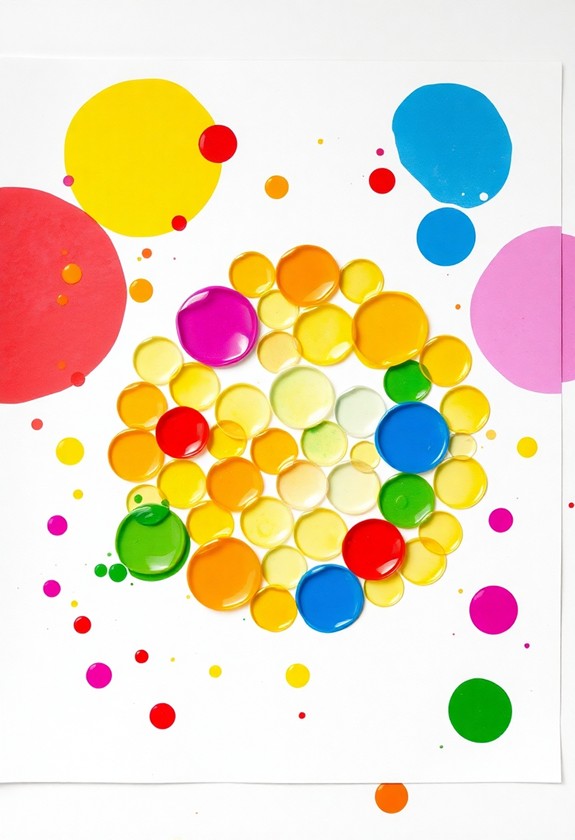
Who knew that packaging material could be such a fun art tool? Bubble wrap isn't just for popping anymore! It's time to transform this humble packing staple into a creative printing press for your toddler. Get ready for some bubbly fun!
Here's what you'll need:
- Bubble wrap
- Washable paint
- Paper
- Scissors
- Paint brushes or rollers
Let's get started! Cut the bubble wrap into manageable sizes for little hands. Now, here comes the messy part – and it's well understood that toddlers love that! Pour some paint onto a plate and let your little one use a brush or roller to apply it to the bubble wrap. But wait, there's more! Flip that colorful bubble wrap over and press it onto the paper. Voila! You've got a unique, textured masterpiece.
Want to mix it up? Try different colors, overlap prints, or even cut the bubble wrap into shapes before printing. The possibilities are endless! And don't forget, this activity isn't just about art – it's a sensory explosion! The squishy paint, the bumpy texture, the satisfying 'pop' as they press down – it's a feast for the senses!
Ice Cube Watercolor Painting
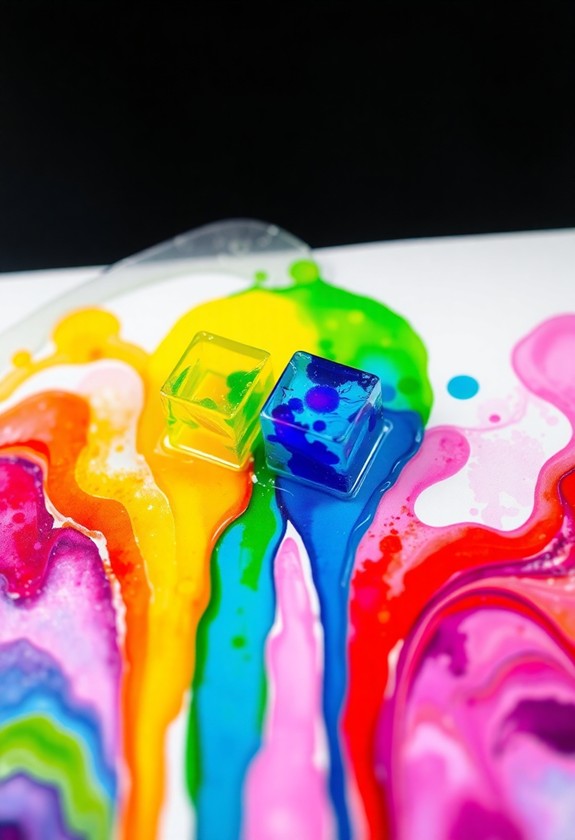
On a hot summer day, there's nothing quite like the cool sensation of ice against your skin. Now, imagine combining that invigorating feeling with lively colors and creativity! That's exactly what you'll get with ice cube watercolor painting. It's a chilly thrill that'll have your toddler giggling with glee!
Here's how to get started:
- Freeze water mixed with food coloring in ice cube trays
- Set up paper on a flat surface (outdoors is best for easy cleanup)
- Let your little one grasp the icy cubes and watch the magic unfold!
As the ice melts, it'll leave behind a trail of beautiful colors. Your toddler will be amazed at how the hues blend and swirl together. It's like a rainbow explosion on paper!
This activity is perfect for developing fine motor skills and color recognition. Plus, it's a sensory bonanza! The cold ice, wet paper, and lively colors engage multiple senses at once. So, get ready to "chill out" with this cool art project. Your toddler will have a blast creating icy masterpieces that are certain to melt your heart!
Nature Texture Rubbings
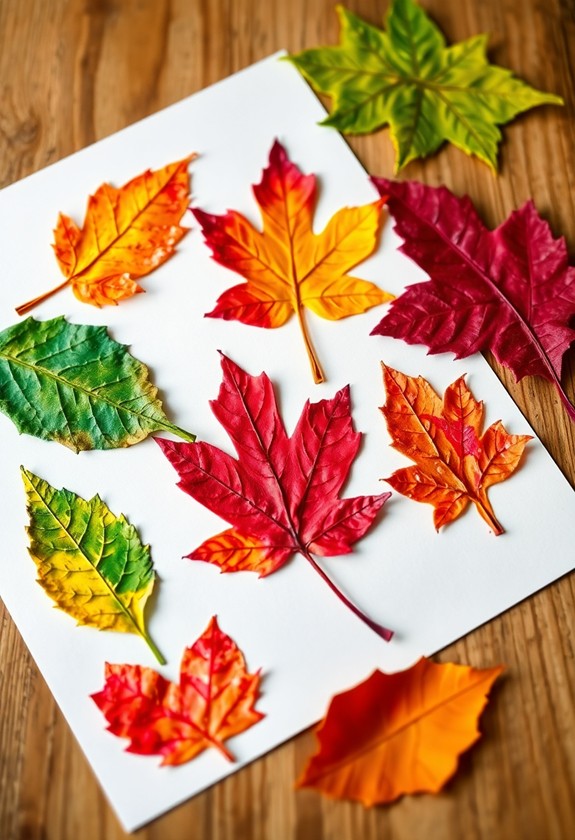
Three words: texture, nature, and art. Put them together, and you've got an amazing sensory experience for your little one! Nature texture rubbings are a fantastic way to engage your toddler's senses during creating beautiful artwork.
Here's what you'll need:
- Paper
- Crayons (with wrappers peeled off)
- Various natural objects (leaves, bark, rocks)
Let's get started!
- Head outside for a nature walk. Encourage your tot to collect interesting textured items.
- Place your paper over the object.
- Rub the side of the crayon across the paper. Watch as the texture magically appears!
This activity is leaf-rific! It's a tree-mendous way to investigate the great outdoors. Your little artist will be bark-ing with excitement as they uncover new patterns and shapes. Plus, it's a hands-on lesson in science and art!
Want to branch out? Try different colors or layer textures. You can even create a nature-inspired collage! The possibilities are endless, and the results are always im-press-ive. So, get outside and start rubbing – nature's waiting to make its mark on your toddler's art!
Sensory Bin Art Exploration
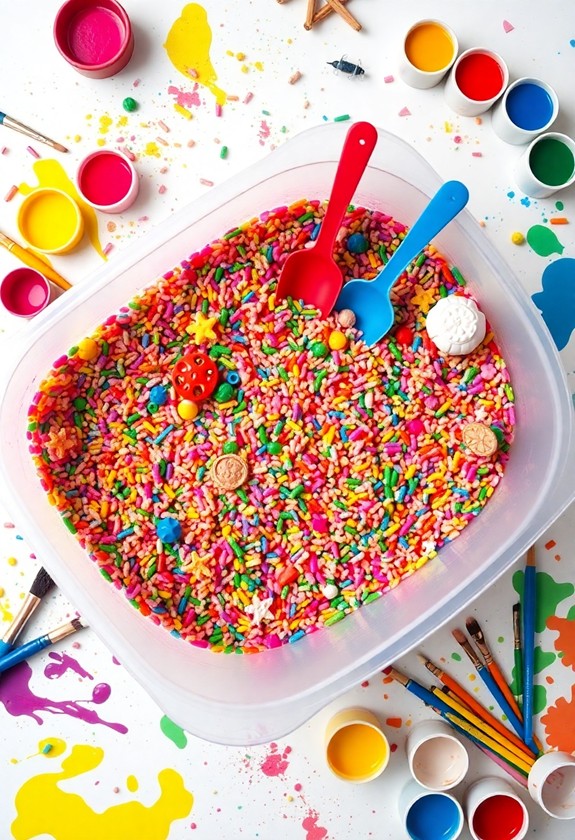
Toddlers' imaginations soar when they immerse themselves in sensory bin art exploration. It's a hands-on adventure that'll have your little one giggling with glee! Ready to jump in? Let's get started!
Create Your Bin:
Fill a large, shallow container with a base material like rice, beans, or sand. Now, add some artsy flair! Toss in colorful pom-poms, feathers, or even glittery pipe cleaners. Don't forget tools like scoops, brushes, and small containers.
Encourage Exploration:
Watch as your tot digs, pours, and swirls the materials. They're not just playing—they're learning about textures, colors, and cause-and-effect. Awesome!
Art-ify It:
Add a twist by introducing art supplies. Squirt some paint onto paper plates and let your child use items from the bin as stamps or brushes. Or, try sprinkling dry materials onto glue-covered paper for a textured masterpiece.
Sensory Storytelling:
Use the bin to create scenes from favorite stories. A desert for camels? An ocean for fish? The possibilities are endless, and oh-so-fun!
Glow-in-the-Dark Painting
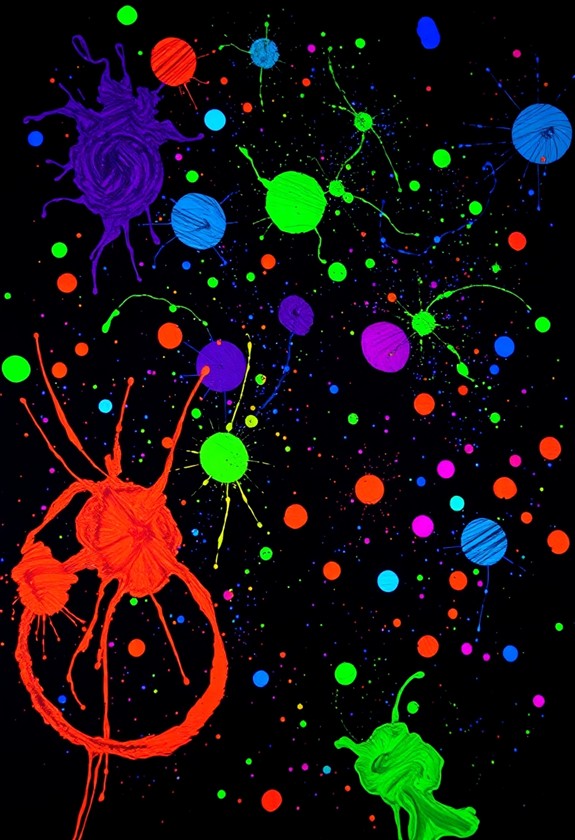
Magic comes alive when the lights go out! Glow-in-the-dark painting is a thrilling sensory adventure for your little one. It's time to create luminous masterpieces that'll shine bright in the dark!
What you'll need:
- Glow-in-the-dark paint
- Black paper
- Brushes or sponges
- UV flashlight (optional)
Start by setting up a cozy, dark space. Turn off the lights and let the fun begin! Squeeze out some glowing paint and watch your toddler's eyes light up with wonder. They'll love investigating the cool, slimy texture as they spread it across the paper. Encourage them to make swirls, dots, and even handprints – the possibilities are endless!
But wait, there's more! Shine a UV flashlight on the artwork to make it glow even brighter. It's like magic right before your eyes! This activity isn't just a feast for the eyes; it's a full sensory experience. The chilly paint, the darkness, and the glowing designs will enchant your little artist's imagination. So, get ready to "glow" with the flow and create some dazzling art!
Curious Little Questions
How Can I Adapt These Activities for Children With Sensory Sensitivities?
You've got this! For children with sensory sensitivities, it's all about tailoring the experience. Start small and build up gradually. Offer choices – let them decide what textures or materials they're comfortable with. Use gentler sensory inputs, like softer textures or muted colors. Create a calm environment with low lighting and quiet music. Don't forget to provide breaks and a safe space for overwhelmed kiddos. Remember, every child is unique, so be patient and celebrate their progress!
What Safety Precautions Should I Take During These Art Activities?
Safety first, art enthusiasts! You'll want to keep a watchful eye on your little Picassos. Make certain all materials are non-toxic and age-appropriate. Watch out for small items that could be choking hazards. Supervise, supervise, supervise! Keep messy stuff away from eyes and mouths. Have a first-aid kit handy, just in case. And don't forget to protect your floors and furniture – lay down some newspapers or a drop cloth. Let's make art, not accidents!
How Do I Remove Stubborn Art Materials From Clothing and Surfaces?
Got stubborn art stains? Don't worry, you've got this! For clothing, try pre-treating with dish soap or laundry detergent before washing. Rubbing alcohol works wonders on marker stains. For surfaces, baking soda paste is a miracle worker! Mix it with water and scrub away. And don't forget the power of vinegar – it's great for removing dried paint. Remember, the sooner you tackle those stains, the better your chances of success. Happy cleaning, you artistic genius!
Are There Any Age-Specific Modifications for These Activities With Older Children?
Did you know that 90% of a child's brain development happens before age 5? That's why art is so important! But don't worry, you can easily adapt activities for older kids. For tweens and teens, try these exciting tweaks:
- Scale up: Use bigger canvases or surfaces!
- Add complexity: Introduce new techniques, like shading or perspective.
- Go digital: Investigate digital art tools and apps.
- Collaborate: Create group projects or murals.
- Theme it: Base activities on their interests or current events.
How Can I Incorporate Learning Objectives Into These Sensory Art Experiences?
You can easily sneak learning into sensory art fun! Try counting shapes or colors as you create. Practice letters by forming them with clay or paint. Investigate science concepts like mixing colors or discussing textures. Boost vocabulary by introducing new descriptive words. And don't forget problem-solving skills – encourage kids to figure out how to make specific designs or effects. It's a win-win: they're having a blast as their brains are growing! Plus, you'll be amazed at how much they absorb through play!


